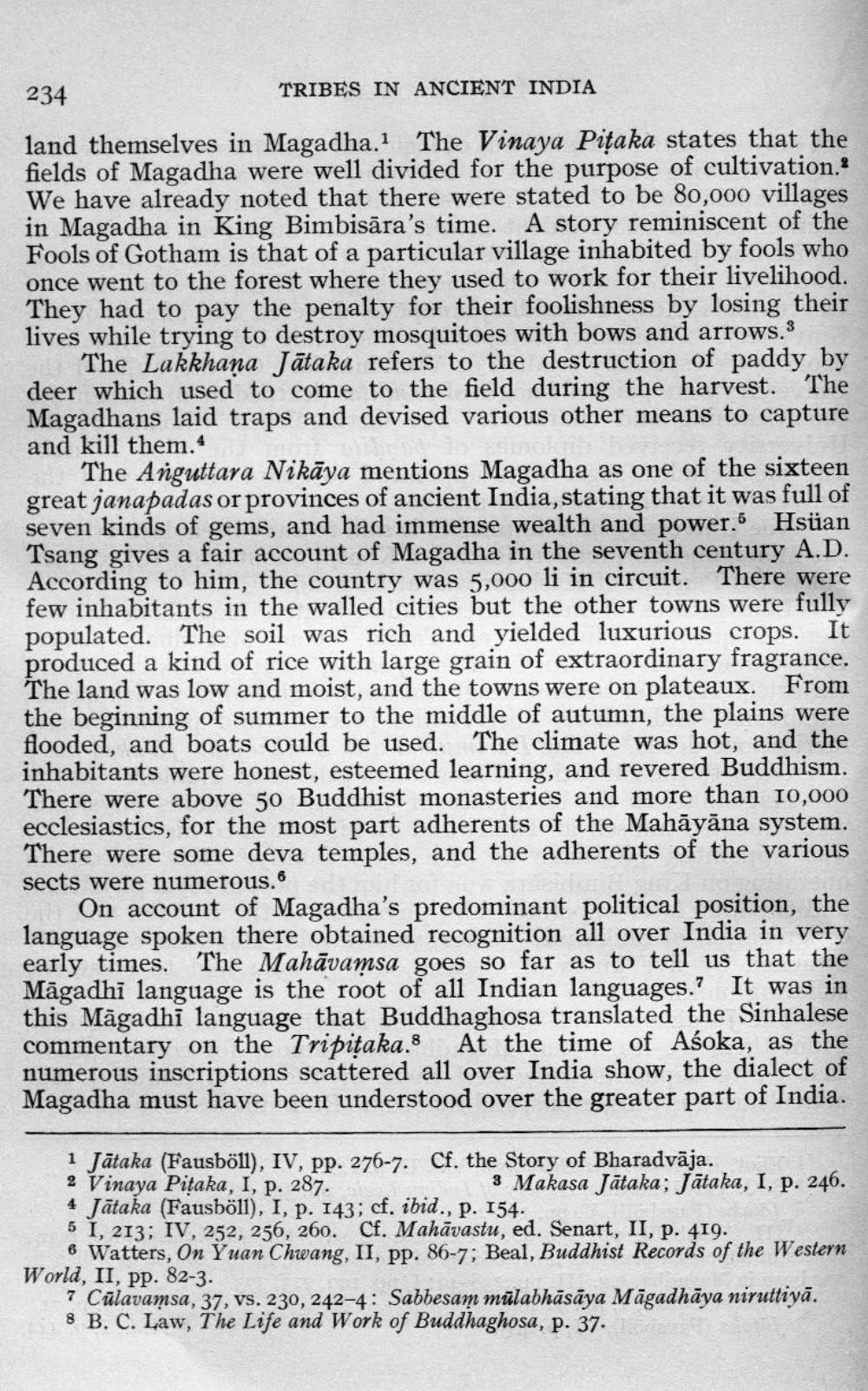________________
234
TRIBES IN ANCIENT INDIA
land themselves in Magadha.1 The Vinaya Pițaka states that the fields of Magadha were well divided for the purpose of cultivation. We have already noted that there were stated to be 80,000 villages in Magadha in King Bimbisāra's time. A story reminiscent of the Fools of Gotham is that of a particular village inhabited by fools who once went to the forest where they used to work for their livelihood. They had to pay the penalty for their foolishness by losing their lives while trying to destroy mosquitoes with bows and arrows.3
The Lakkhana Jātaka refers to the destruction of paddy by deer which used to come to the field during the harvest. The Magadhans laid traps and devised various other means to capture and kill them.4
The Anguttara Nikāya mentions Magadha as one of the sixteen great janapadas or provinces of ancient India, stating that it was full of seven kinds of gems, and had immense wealth and power. Hsüan Tsang gives a fair account of Magadha in the seventh century A.D. According to him, the country was 5,000 li in circuit. There were few inhabitants in the walled cities but the other towns were fully populated. The soil was rich and yielded luxurious crops. It produced a kind of rice with large grain of extraordinary fragrance. The land was low and moist, and the towns were on plateaux. From the beginning of summer to the middle of autumn, the plains were flooded. and boats could be used. The climate was hot, and the
were honest, esteemed learning and revered Buddhism. There were above 50 Buddhist monasteries and more than 10,000 ecclesiastics, for the most part adherents of the Mahāyāna system. There were some deva temples, and the adherents of the various sects were numerous.
On account of Magadha's predominant political position, the language spoken there obtained recognition all over India in very early times. The Mahāvamsa goes so far as to tell us that the Māgadhi language is the root of all Indian languages. It was in this Māgadhi language that Buddhaghosa translated the Sinhalese commentary on the Tripitaka.8 At the time of Asoka, as the numerous inscriptions scattered all over India show, the dialect of Magadha must have been understood over the greater part of India.
1 Jātaka (Fausböll), IV, pp. 276-7. Cf. the Story of Bharadvāja. 2 Vinaya Pitaka, I, p. 287.
3 Makasa Jātaka; Jātaka, I, p. 246. 4 Jặtaka (Fausböll), I, p. I43; cf, ibhd., p. I54. 5 I. 213: IV. 252, 256. 260. Cf. Mahāvastu, ed. Senart. II. p. 410
6 Watters, On Yuan Chwang, II, pp. 86-7; Beal, Buddhist Records of the Western World, II, pp. 82-3.
7 Cūlavamsa, 37, vs. 230, 242-4: Sabbesam mūlabhāsāya Māgadhāya niruttiyā. 8 B. C. Law, The Life and Work of Buddhaghosa, p. 37.




